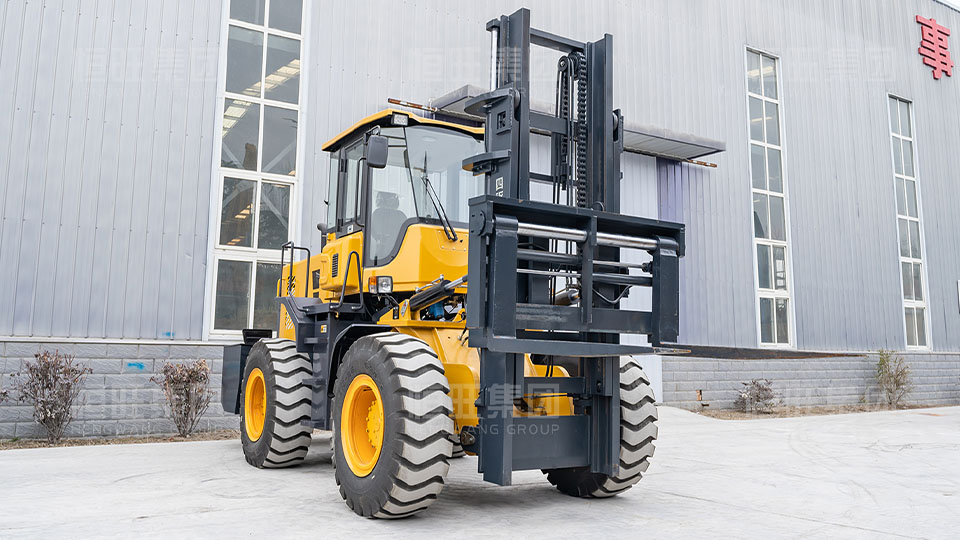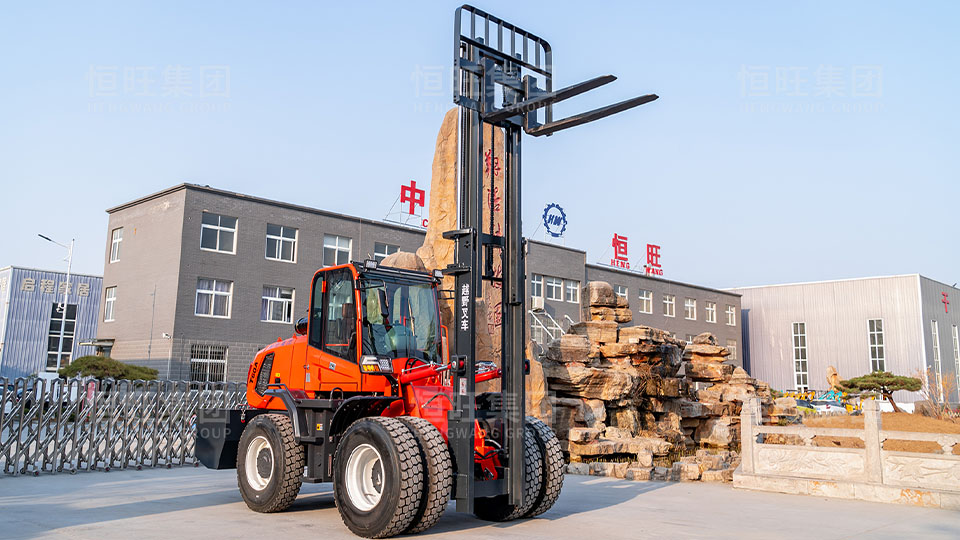In operations on rugged terrains, off-road forklift purchase mistakes can sharply increase costs. This guide focuses on four key parameters to help you avoid pitfalls and select cost-effective equipment with quantifiable metrics.
1. Gradient Capacity: The Core Indicator for Overcoming Terrain Limitations
Regular forklifts typically have a gradient capacity of 20°. In contrast, Hengwang's HW-T100A all-terrain forklift can handle 40° slopes, while the HWCY-50 easily manages 35° inclines. Take mining operations as an example. The Cape Town Mining Company in South Africa, after off-road forklift purchase of a 25°-capacity forklift, frequently experienced slippage and downtime during the rainy season. After switching to the HW-T100A, their daily operation time increased by 3.5 hours. When purchasing off-road forklifts, always verify the manufacturer's gradient test reports, just like Hengwang's ISO 14396-certified tests in South African mines.

2. Load Center Distance: The Hidden Stability Threat
The load center distance directly impacts a forklift's anti-tipping ability. The industry standard is 500mm, but all Hengwang models adopt an optimized 600mm design, reducing the rollover risk by 40% when handling 10-ton materials. The São Paulo Construction Group in Brazil once purchased a non-standard forklift to cut costs, resulting in a cargo-tipping accident that incurred repair costs exceeding 30% of the vehicle price. After choosing the Hengwang HWCY-50, their stability improved significantly. When shopping for off-road forklifts, prioritize models with EU EN 16203 stability certification, like Hengwang's full range.
3. Tire Types: The Scenario-based Choice between Solid and Pneumatic Tires
· Solid Tires: The HWCY-50 comes with explosion-proof solid tires, ideal for harsh environments with debris. This reduces maintenance costs by $2,800 annually compared to pneumatic tires.
· Pneumatic Tires: The HWC-35 offers high-tread pneumatic tires, providing 30% better traction in muddy fields and 15% lower fuel consumption. The Queensland Logistics Park in Australia suffered 12 tire blowouts in half a year with regular pneumatic tires. After switching to HWCY-50's solid tires, the failure rate dropped to zero. Off-road forklift purchase decisions should align with your specific terrain needs, and Hengwang offers free terrain surveys for customized solutions.

4. Fuel Consumption: The Long-Term Difference between 1.2L/h and 1.8L/h
During an 8-hour operation, Hengwang's HWC-40 diesel model consumes only 1.2L/h, saving 10,500 USD annually compared to regular forklifts' 1.8L/h. The Riyadh Engineering Company in Saudi Arabia saved 9,600 USD per year by choosing the HWC-40, leading to a 3-year fuel cost savings of over 28,000 USD. When selecting off-road forklifts, demand ISO 14396-certified fuel consumption reports. All Hengwang models come with EU Stage V emissions and ISO 14396 dual certifications.
Avoid Purchase Pitfalls Now! Click [link] to get Hengwang's All-Terrain Forklift Parameter Comparison Manual, featuring real data from 7 models. Visit our website for 3D model views and request on-site demonstrations. Make an informed off-road forklift purchase and revolutionize your operations!
